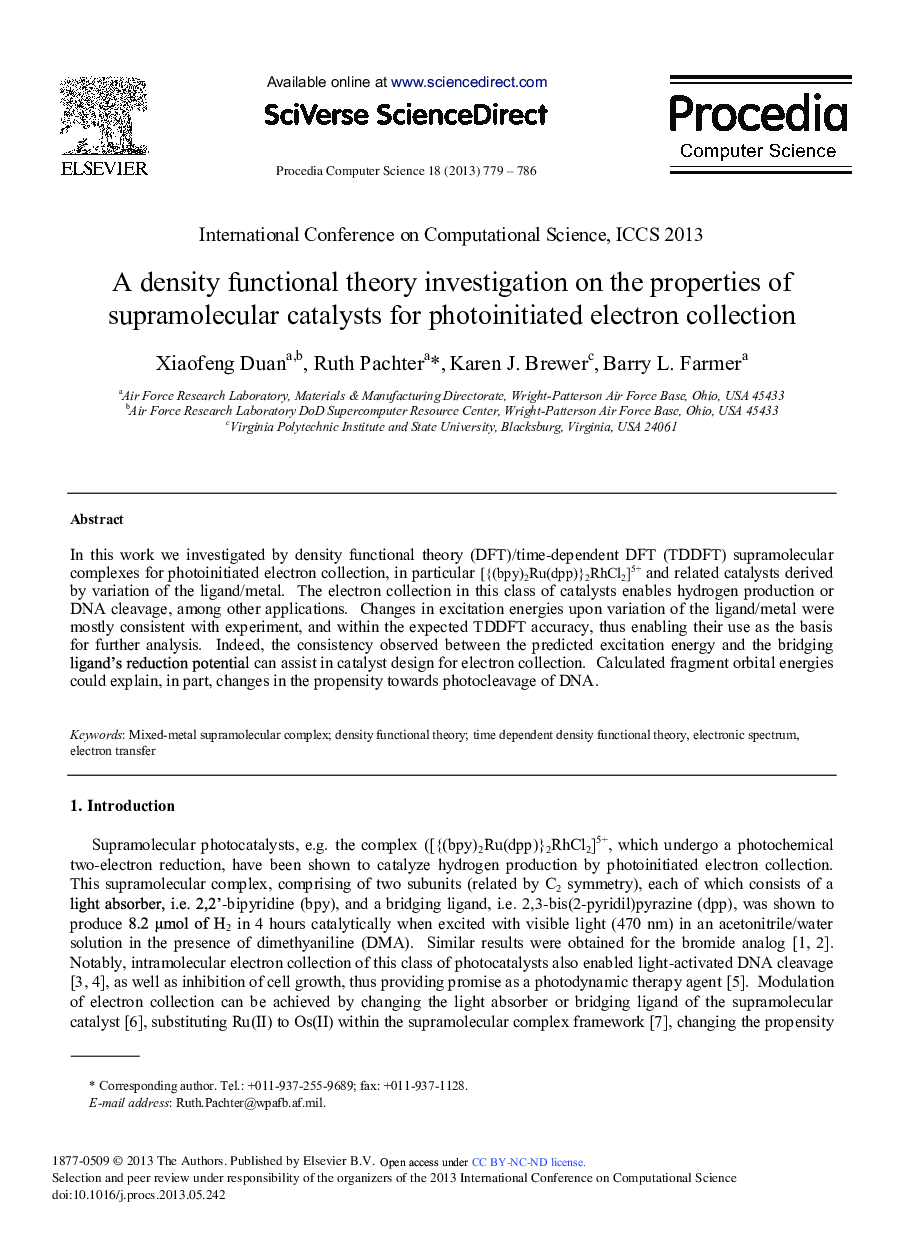| Article ID | Journal | Published Year | Pages | File Type |
|---|---|---|---|---|
| 490552 | Procedia Computer Science | 2013 | 8 Pages |
In this work we investigated by density functional theory (DFT)/time-dependent DFT (TDDFT) supramolecular complexes for photoinitiated electron collection, in particular [{(bpy)2Ru(dpp)}2RhCl2]5+ and related catalysts derived by variation of the ligand/metal. The electron collection in this class of catalysts enables hydrogen production or DNA cleavage, among other applications. Changes in excitation energies upon variation of the ligand/metal were mostly consistent with experiment, and within the expected TDDFT accuracy, thus enabling their use as the basis for further analysis. Indeed, the consistency observed between the predicted excitation energy and the bridging ligand's reduction potential can assist in catalyst design for electron collection. Calculated fragment orbital energies could explain, in part, changes in the propensity towards photocleavage of DNA.
